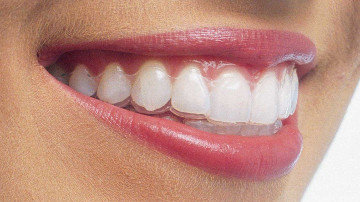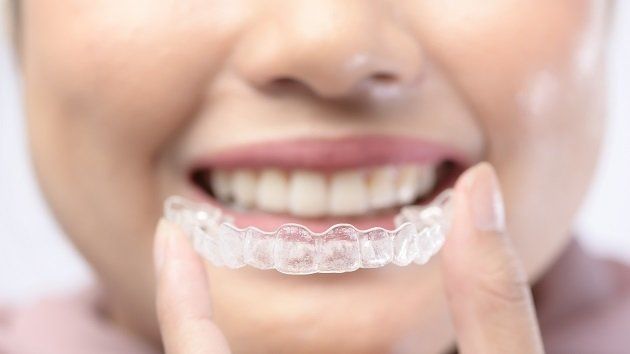How Invisalign Functions: Your Overview to Clear Aligners and Their Effectiveness
How Invisalign Functions: Your Overview to Clear Aligners and Their Effectiveness
Blog Article
Invisalign vs. Standard Dental braces: Which Option Is Right for You?
When thinking about orthodontic treatment, the option between Invisalign and standard braces presents several vital aspects that merit cautious assessment. Invisalign offers a very discreet choice with removable aligners, while conventional braces provide an extra visible yet effective solution for extreme imbalance.
Summary of Treatment Alternatives

On the other hand, conventional dental braces consist of metal braces and wires that are bonded to the teeth. This approach applies continual stress in time to attain alignment. While efficient for intricate orthodontic problems, typical braces require routine sees for adjustments and can position obstacles in maintaining oral health as a result of the difficulty of cleaning around braces and cords.
Both options have their qualities, and the option commonly rests on particular oral problems, way of living choices, and person compliance. Ultimately, getting in touch with an orthodontic professional is critical for identifying one of the most ideal therapy strategy customized to specific requirements. Comprehending the subtleties of each choice can dramatically affect the total success of orthodontic treatment.
Visual Factors To Consider
A substantial variable affecting the selection in between Invisalign and typical dental braces is the visual appeal each therapy offers. Invisalign aligners are crafted from clear plastic, making them virtually unnoticeable when worn. This discreet look is particularly interesting grownups and teens that might really feel uneasy regarding their orthodontic treatment. The ability to keep an all-natural smile throughout the positioning process can dramatically boost the individual's self-confidence in expert and social setups.
In contrast, standard braces include metal brackets and cords, which can be a lot more visible. While advancements in orthodontic innovation have brought about the growth of smaller braces and colored elastics, typical braces still keep a more conspicuous account. For some individuals, the exposure of braces might deter them from looking for needed treatment.
Inevitably, the option in between Invisalign and conventional dental braces may rest on personal choices pertaining to aesthetics. Clients that focus on discernment often favor Invisalign, while those who are less worried regarding visibility might opt for conventional dental braces. Recognizing the aesthetic effects of each alternative is essential for making an educated choice that straightens with one's way of life and preferences.
Comfort and Convenience

In regards to convenience, Invisalign aligners are removable, allowing clients to appreciate their favored foods without constraint and preserve optimal dental health. Cleaning and flossing are streamlined, as the aligners can be obtained throughout these routines, whereas conventional braces require cautious navigating around brackets and wires.
In addition, Invisalign's modern system enables fewer orthodontic sees. People normally get several collections of aligners at the same time, which can enhance the treatment process and minimize time spent in the orthodontist's chair. In contrast, traditional dental braces demand normal adjustments, making them much less practical for those with active schedules. Invisalign. In general, the convenience and comfort of Invisalign make it an attractive choice for many individuals looking for orthodontic therapy.
Treatment Duration and Efficiency
While both Invisalign and he said standard braces work in dealing with oral imbalances, the period of treatment can vary substantially between both options. Commonly, Invisalign therapy can take anywhere from 12 to 18 months, depending upon the complexity of the situation. The clear aligners function by gradually changing teeth right into their desired placements, and regular follow-ups with an orthodontist aid make sure development stays on the right track.
In comparison, traditional braces often call for a longer commitment, normally varying from 18 months to three years. This is because of their fixed nature and using brackets and cables, which can be a lot more reliable for serious misalignments and intricate situations (Invisalign). The treatment efficiency of typical braces is well-documented, as they enable for precise modifications and better control over tooth motion
Ultimately, the option in between Invisalign and conventional dental braces might hinge on both the expected therapy duration and the particular oral concerns handy. Consulting with an orthodontist is critical, as they can provide tailored suggestions based upon private you could try here demands, making certain the chosen approach aligns with wanted durations and end results.
Price Contrast and Insurance Coverage Alternatives
Price plays a significant duty in the decision-making process for people taking into consideration orthodontic therapy, whether going with Invisalign or typical braces. Usually, the price of Invisalign arrays from $3,000 to $8,000, while traditional braces generally cost between $2,000 and $6,000. Aspects affecting these costs include the intricacy of the case, the period of treatment, and geographical place.
Several oral insurance policy strategies supply partial coverage for orthodontic therapies, but the specifics can differ widely. Usually, standard dental braces might be much more often covered by insurance coverage strategies contrasted to Invisalign, which some insurance providers classify as an aesthetic procedure.
In addition, numerous orthodontic methods supply adaptable layaway plan, making both therapy choices a lot more obtainable. Patients should ask concerning prospective financing options and discount rates for ahead of time settlements. Examining the complete price, consisting of insurance policy advantages and layaway plan, is necessary for making an educated decision that lines up with both visual preferences and budget plan factors to consider.

Verdict
In recap, the option in between Invisalign and standard braces rests on numerous aspects, consisting of visual preferences, comfort, therapy period, and price. Invisalign supplies a very discreet, removable option that helps with oral health and dietary adaptability, while standard dental braces might be better for intricate dental issues and typically come at a lower rate factor. Eventually, appointment with an orthodontist click resources is vital to assess specific scenarios and determine the most suitable treatment option for attaining optimum dental positioning.
When considering orthodontic therapy, the option between Invisalign and traditional dental braces provides a number of essential factors that warrant cautious assessment.Comparing Invisalign and conventional braces reveals distinctive treatment options for orthodontic correction.While both Invisalign and traditional braces are reliable in correcting oral imbalances, the duration of therapy can vary substantially in between the two alternatives.Expense plays a significant duty in the decision-making process for individuals considering orthodontic treatment, whether choosing for Invisalign or typical braces.In recap, the choice in between Invisalign and traditional dental braces hinges on numerous aspects, consisting of aesthetic choices, comfort, therapy duration, and expense.
Report this page